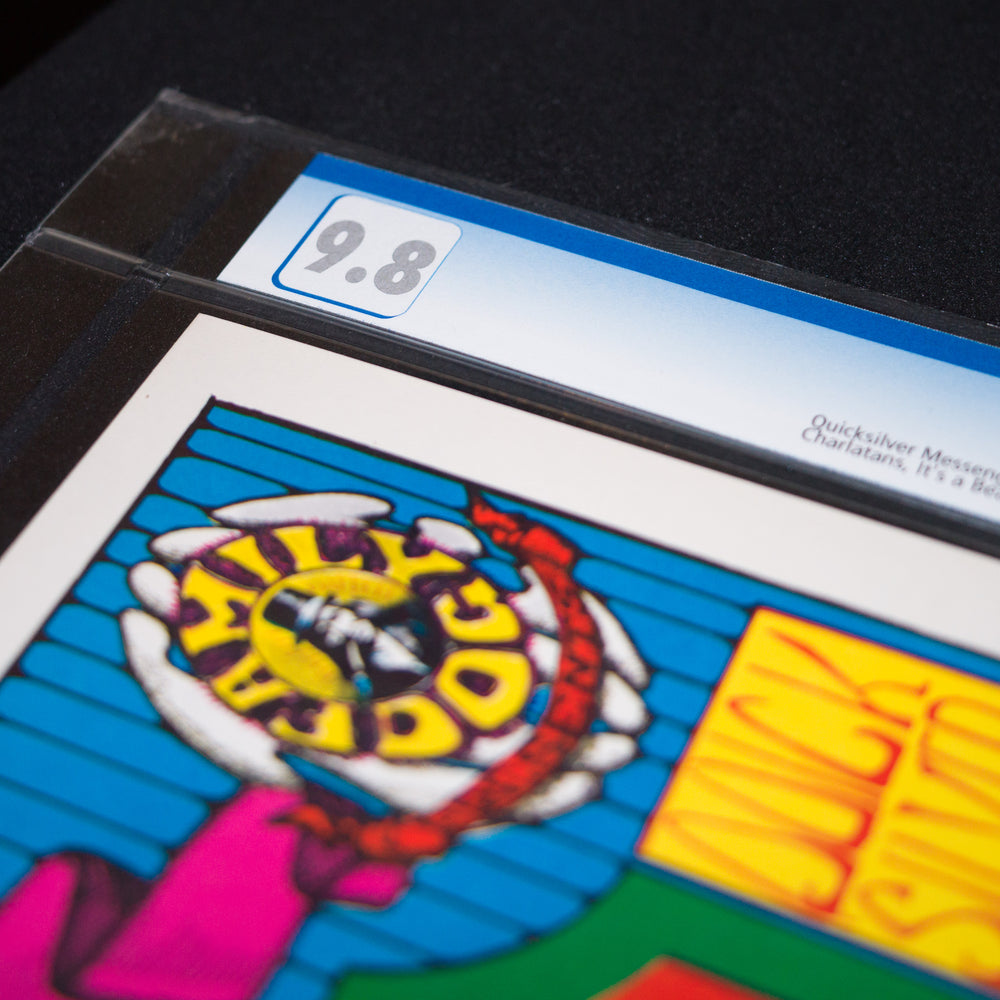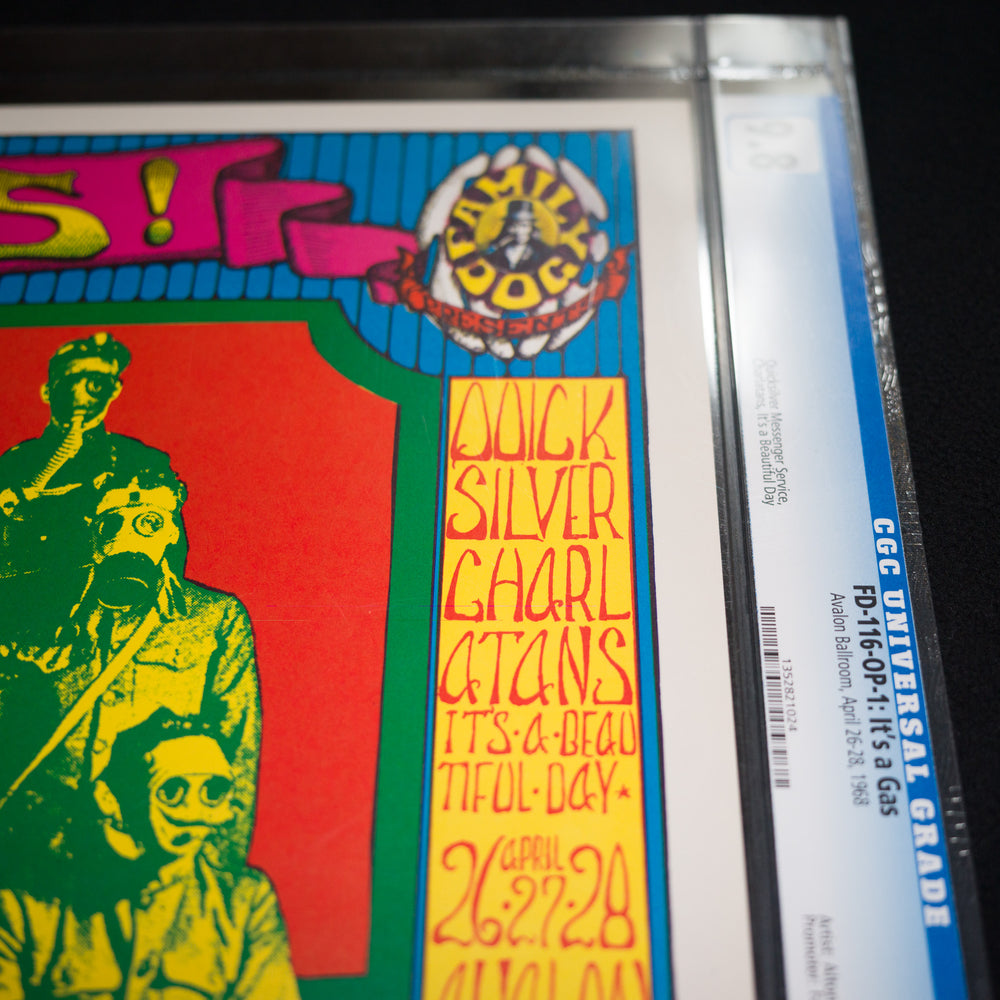Introduction
The "It's a Gas" poster, designed by Alton Kelley for Quicksilver Messenger Service's April 1968 shows at the Avalon Ballroom, is a significant piece of rock poster art. This whimsical design features a photograph of a group of soldiers wearing gas masks. The original poster, printed on uncoated index stock, measures approximately 14″ x 20″. Accompanying the poster, there are three types of postcards measuring approximately 5″ x 7″. The Type A card has a “place stamp here” reverse, the Type B card has a bulk rate permit on the back, and the Type C card, also with a bulk rate permit, was mechanically addressed and sent to people on the Family Dog mailing list.
Key Features
- Artist: Alton Kelly
- CGC Grading 9.8
- Year: 1968
- Edition: FD-116 OP-1
- Signature: NA
- Dimensions: Approximately 14" x 20"
- Material: Original Screen Print
- Venue: The Avalon Ballroom
The Artist: Alton Kelly
Alton Kelley was a prolific American poster artist who emerged as a prominent figure in the psychedelic rock scene of the 1960s. His visionary designs, characterized by their vibrant colors, intricate patterns, and symbolic imagery, became synonymous with the era's counterculture movement.
In the mid-1960s, Kelley found himself drawn to San Francisco's vibrant Haight-Ashbury district, the epicenter of the counterculture movement. It was there, surrounded by like-minded artists and musicians, that he truly found his artistic voice.
Kelley's breakthrough came when he was commissioned by legendary rock promoter Bill Graham to create posters for the Fillmore Auditorium, a legendary venue that hosted countless iconic performances by 1960s rock legends.
Kelley's posters were unlike anything the world had seen before. They were psychedelic explosions of color, infused with intricate patterns and symbolic imagery that resonated deeply with the counterculture ethos. His designs captured the essence of the era's spirit of rebellion, exploration, and limitless possibility.
Kelley's most notable creations include the iconic posters for the Grateful Dead's "Skull and Roses" album and Jefferson Airplane's "Surrealistic Pillow" album. These posters became instantly recognizable and are still considered masterpieces of psychedelic art.
Kelley's work extended beyond rock posters. He also created album covers, flyers, and other graphic design pieces that helped define the visual aesthetic of the 1960s counterculture.
The Band: Quicksilver
The Venue: The Avalon Ballroom
Ah, the Avalon Ballroom! It was another iconic venue in the Haight-Ashbury district, right alongside the Fillmore Auditorium. While both played a crucial role in the 1960s counterculture scene, they each had their own unique vibe and significance.
Here's how the Avalon Ballroom differed from the Fillmore:
- Intimate and bohemian: Unlike the Fillmore's 2,500+ capacity, the Avalon housed around 1,500, fostering a more intimate and almost tribal atmosphere. It felt like a hidden gem, a secret haven for the truly dedicated music lovers and dancers.
- Diverse and experimental: While the Fillmore focused heavily on psychedelic rock, the Avalon embraced a wider range of genres, from folk and blues to jazz and international sounds. It was a melting pot of musical expression, reflecting the eclectic spirit of the Haight-Ashbury scene.
- Community-driven: The Avalon wasn't just about big-name acts. It was a space for local bands to gain traction, for dancers to showcase their styles, and for artists to exhibit their work. It was a platform for the community itself, a place where creativity and self-expression flowed freely.
- Counterculture hub: The Avalon was a hotbed of political activism and social awareness. It hosted benefits for various causes, from anti-war movements to environmental protection, and its events often became platforms for voicing dissent and inspiring change.
Think of the Fillmore as the grand stage, the place where established bands would deliver electrifying performances. The Avalon, on the other hand, was the underground speakeasy, the place where anything could happen and where the true soul of the counterculture burned bright.




